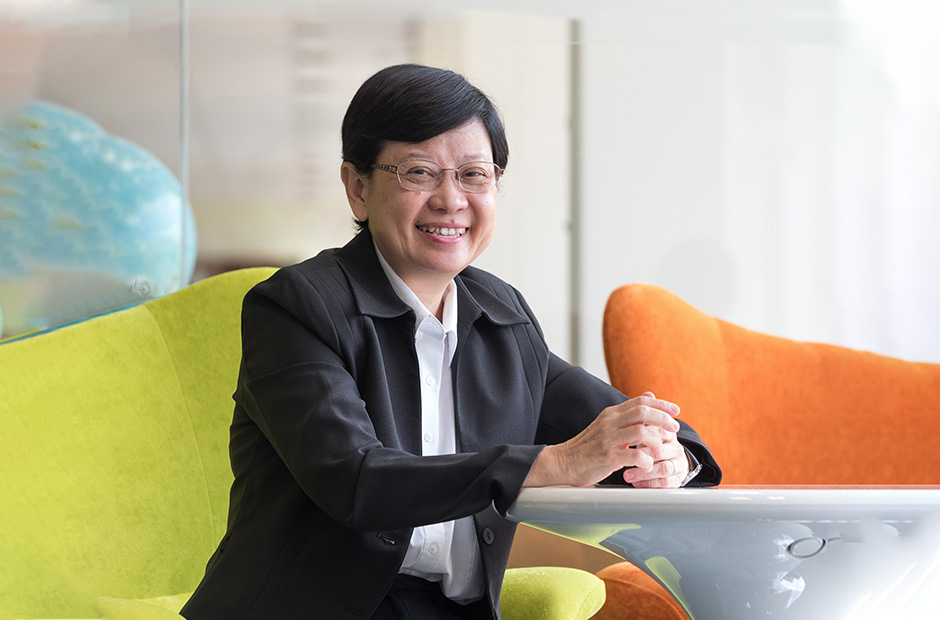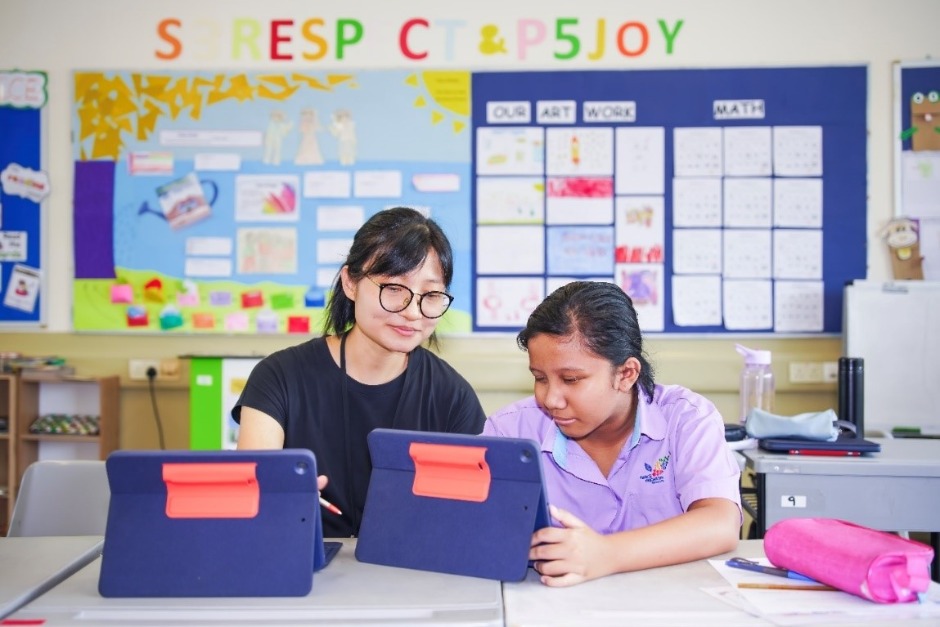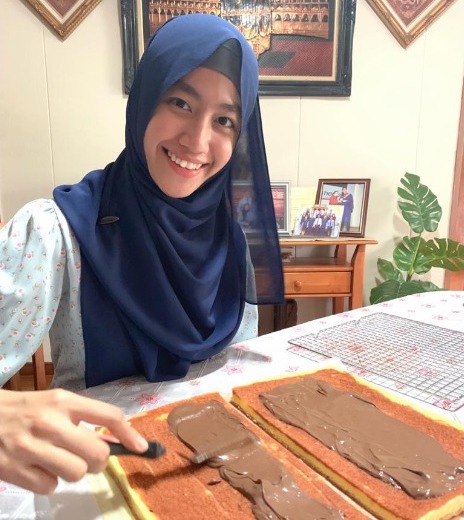The last time Contact: The Teachers’ Digest interviewed Mrs Chua-Lim Yen Ching, Deputy Director-General of Education (Professional Development) and Executive Director of the Academy of Singapore Teachers, she shared with us about The Joy of Learning.
Now, Mrs Chua is steering SkillsFuture for Educators (SFEd). Launched in March 2020, SFEd is a professional development (PD) roadmap to guide teachers in planning their own learning and development.
“Teaching is a craft, and you need to constantly hone this craft,” she explains. “As teachers, when it comes to learning, we cannot say that we have arrived, because learning is a journey.”
She unpacks SFEd (pronounced as S-F-Ed), sharing her vision for how we as educators can use this roadmap to support our PD planning.
Why do I need to focus on 6 Areas of Practice in SFEd?
In a survey done by AST in 2019, the teachers themselves shared with us these 6 areas as being amongst their top learning needs.
SFEd supports teachers to be more targeted and focussed in their PD planning in pursuit of these 6 Areas of Practice. Through PD, we can become better classroom teachers to nurture future-ready learners.
Mapping SFEd is a fairly extensive piece of work. Not only do we work closely with NIE, we have to work with other divisions as AST is not the only division that conducts PD.
Ultimately, it’s not the number of PD hours you have attended, but how you have applied the learning and enacted it in the classroom – that is a true test of whether the PD has been effective.
After all, deep inside every one of us educators, there’s always an inner desire to want to teach well.
SFEd complements the Teacher Growth Model (TGM). Many teachers want to work on the Teacher Outcomes as ‘The Competent Professional’; some also want to work on ‘The Transformational Leader’ role.
SFEd has 4 Levels of Practice and this would be a systematic way to help our teachers to move from one level to the next.
How will SFEd benefit me as an educator?
Now, some teachers may ask, “Will I be assessed during my work review if I haven’t reached a certain level?” My answer is, you are the one who determines which level you are at and how you would like to move from one level to the next. What matters is your classroom practice – how you have enacted visible changes in the classroom.
I understand that teachers will be apprehensive initially, but we [at AST] have confidence that the School Leaders understand the intent of SFEd. When we first launched the Singapore Teaching Practice (STP), we had similar concerns regarding appraisal. We told teachers that the STP is not for appraisal; it’s a resource for you, it’s to help you. So far, none of the teachers has expressed this concern and they shared that the resources in STP are very useful.
We have briefed our School Leaders and School Staff Developers (SSDs) to work closely in planning this PD roadmap with our teachers; from there, you keep track of your learning journey to become more skilful in your classroom.
With a more structured roadmap and the upcoming OPAL2.0, we hope you as teachers can map and keep track of your learning pathways so you can see how your classroom practice has changed over time in your different stages of development as teachers and, from there, continue to hone your craft.
Who determines which Level of Practice a teacher is at in SFEd?
It’s the teachers themselves. The philosophy of “Teacher Ownership, Teacher Leadership” (TOTL) means you own your PD.
I’m very impressed with our teachers. They are very busy but willing to spend time sharing their pedagogical practices with others. In fact, we have more than 150 teachers who volunteered to conduct Teacher-Led workshops at AST this year.
This adjective, “teacher-led”, is very important. For our Teachers’ Conference 2019, we increased the number of concurrent sessions from 80 to 126 because the teachers previously told us that they liked the sessions as they are learning from one another. We were very touched when we received over 500 proposals. This shows that not only do our teachers understand TOTL, but they also believe in it and exemplify it in their course of work.
Can you describe how teachers at different stages of their careers can use SFEd to guide their PD?
For beginning teachers who just graduated from NIE, they shared that they spend a lot of time preparing lessons. My response to them is: it’s because you have just started the journey, whether it’s classroom management or preparation of lessons, you need time to master the skills.
With time and experience and the relevant PD, they will be able to master the craft of teaching and do things faster and better. Mentoring is also a type of PD. That’s why every beginning teacher has a mentor. And while the mentor supports the beginning teacher for 2 years, we [AST] support the mentor for 2 years through the Instructional Mentorship Programme (IMP).
It’s not enough to have subject content knowledge (SCK); you need pedagogical content knowledge (PCK) to bring across the subject matter effectively. Knowledge acquisition alone is not enough for our students to be future-ready. We do not want our students to only give us the right answers, we want them to be able to ask the right questions.
Because, later on in life, the ability to ask the right questions will help them to think and look for different ways to solve problems. Sometimes, when a student gives a wrong answer, the teacher could ask the student further questions in order to address any learning gaps. There may also be occasions where a student has given the correct answer but he/she may not have fully understood the concept.
For experienced teachers, they have strong PCK but they still need to continue to learn as there are changes in the profile of the learners, i.e. our students and also the curriculum.
Some experienced teachers mentor while others lead Professional Learning Teams. That is how our experienced teachers engage in learning with their peers.
For teachers close to retirement, their learning doesn’t stop; they continue to learn and are role models of lifelong learning. Since every teacher has different responsibilities in their career journeys, every teacher will learn at different stages of their desired learning pathways.
How will you know SFEd is working?
SFEd is truly effective when you see change being enacted in the classroom. And who will tell us? Our students, of course. It’s very visible; our students will be able to see the difference in our classrooms.
There was this primary 3 class that I once observed. The student raised her hand and said, “Teacher, please call me, my ideas are exploding from my head!” I can tell this is an engaging lesson. The teacher shared that her lesson was so engaging that she hoped the bell will not sound.
It’s very important for teachers to leave the last 5 minutes of a lesson to do a bit of metacognition, that means, thinking about thinking. A skilful teacher would not want the bell to end the lesson, or leave the lesson hanging halfway.
So how you start your lesson is crucial: by activating prior knowledge before imparting new knowledge. It is also important to have closure, that is, to summarise the lesson or pose questions to check for students’ understanding.
What’s so special about PD for teachers in Singapore?
Teaching adults and teaching students are very different. When teachers come together and learn as a group, we find that they tend to be more effective and have greater synergy as opposed to their learning as individuals.
We have over 300 Network Learning Communities (NLCs). We observe that in an NLC, when teachers engage in discussion, there’s a higher level of professional discourse. After all, teachers sharpen each other’s saw. From this, we can see the shared leadership within the group and identify the experts in the different areas. This makes the discussion very rich.
Moving forward, we will have more blended learning. Technology has been very useful especially during this period. Weeks ago, I interacted with over 100 SSDs in 5 different locations through an online platform that allowed two-way interaction. And more recently, I interacted with 550 beginning teachers using the same digital platform as the teachers logged in from their homes. So you see, there are many different ways of conducting PD effectively.
What are your hopes for SFEd?
Our teachers need to understand new pedagogies and how to harness them to prepare our students well to be future-ready. If our teachers can apply and enact what they learn, it will be a real joy – to know that every teacher is engaged in learning with their students.
That is something we hope to see – a skilful teacher, strong not just in SCK and PCK, but able to engage the class and have a positive classroom culture. We hope that SFEd can guide our teachers to become skilful teachers.
While we must be flexible and dynamic to make changes along the way, there are certain fundamentals that will remain and one of them is values.
I leave you with a quote I find useful: “When it comes to the fundamentals, we must have unity. When it comes to the non-essentials, we can have flexibility. But in all things, we must have charity; we must do it with love.”





.jpg)
